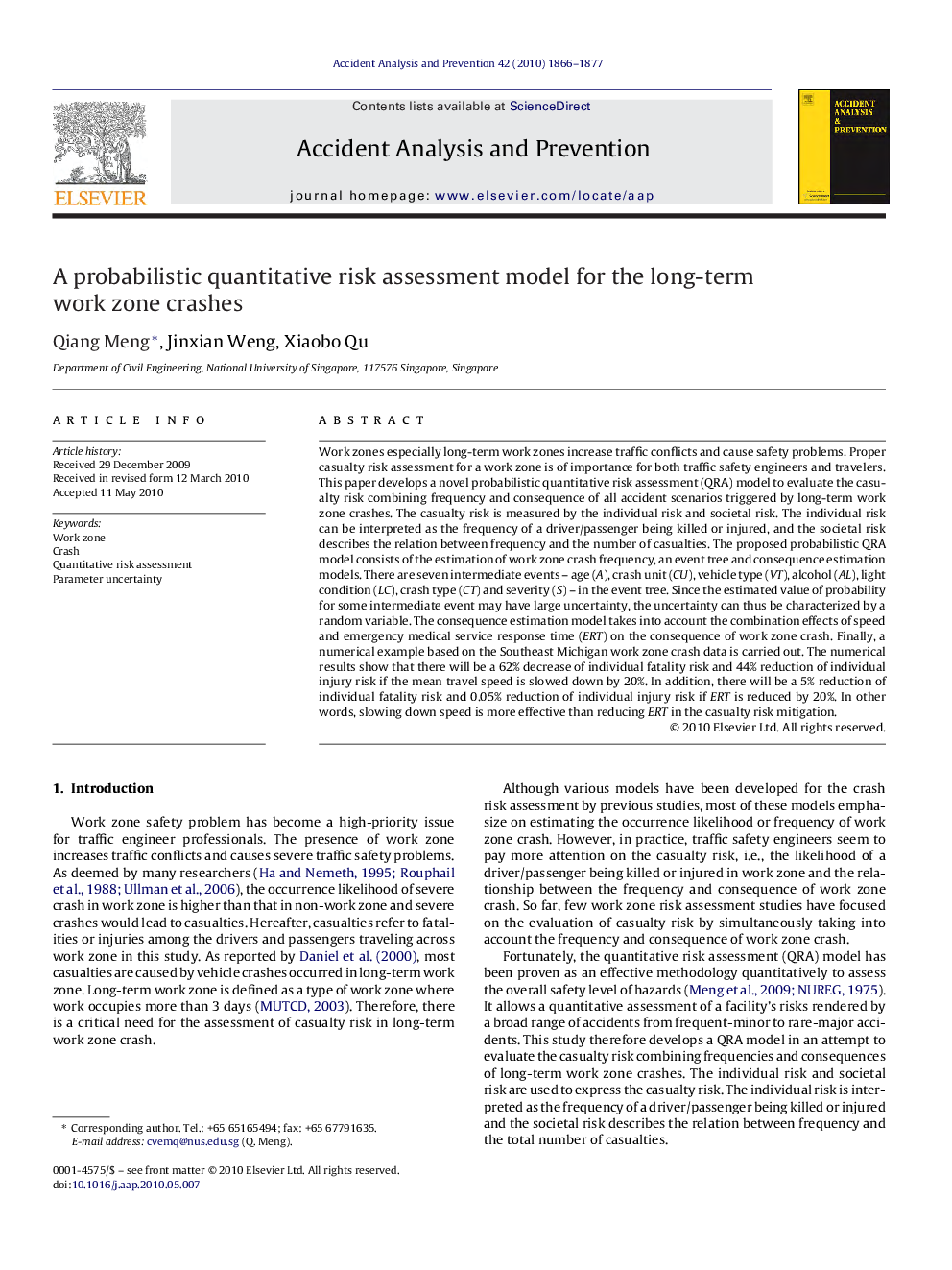| Article ID | Journal | Published Year | Pages | File Type |
|---|---|---|---|---|
| 573163 | Accident Analysis & Prevention | 2010 | 12 Pages |
Abstract
Work zones especially long-term work zones increase traffic conflicts and cause safety problems. Proper casualty risk assessment for a work zone is of importance for both traffic safety engineers and travelers. This paper develops a novel probabilistic quantitative risk assessment (QRA) model to evaluate the casualty risk combining frequency and consequence of all accident scenarios triggered by long-term work zone crashes. The casualty risk is measured by the individual risk and societal risk. The individual risk can be interpreted as the frequency of a driver/passenger being killed or injured, and the societal risk describes the relation between frequency and the number of casualties. The proposed probabilistic QRA model consists of the estimation of work zone crash frequency, an event tree and consequence estimation models. There are seven intermediate events - age (A), crash unit (CU), vehicle type (VT), alcohol (AL), light condition (LC), crash type (CT) and severity (S) - in the event tree. Since the estimated value of probability for some intermediate event may have large uncertainty, the uncertainty can thus be characterized by a random variable. The consequence estimation model takes into account the combination effects of speed and emergency medical service response time (ERT) on the consequence of work zone crash. Finally, a numerical example based on the Southeast Michigan work zone crash data is carried out. The numerical results show that there will be a 62% decrease of individual fatality risk and 44% reduction of individual injury risk if the mean travel speed is slowed down by 20%. In addition, there will be a 5% reduction of individual fatality risk and 0.05% reduction of individual injury risk if ERT is reduced by 20%. In other words, slowing down speed is more effective than reducing ERT in the casualty risk mitigation.
Related Topics
Physical Sciences and Engineering
Chemical Engineering
Chemical Health and Safety
Authors
Qiang Meng, Jinxian Weng, Xiaobo Qu,
